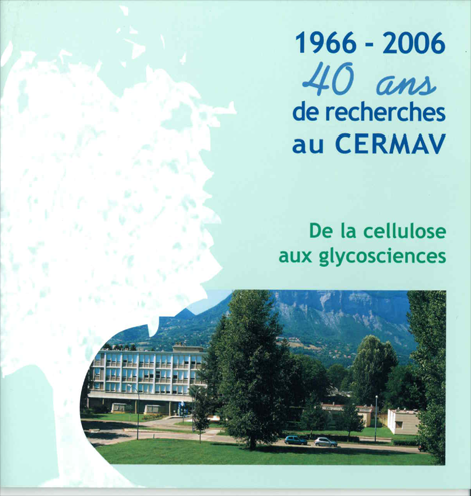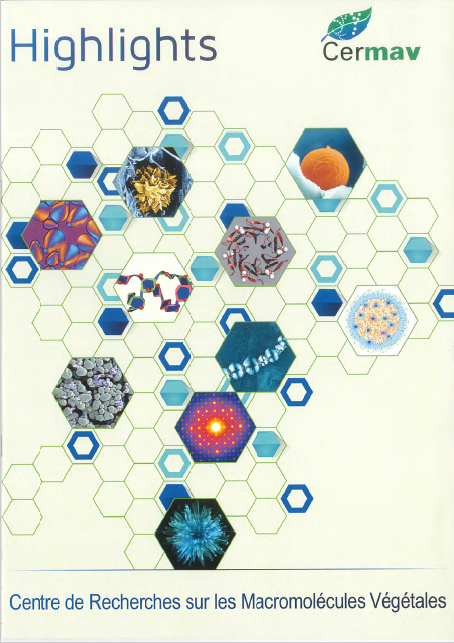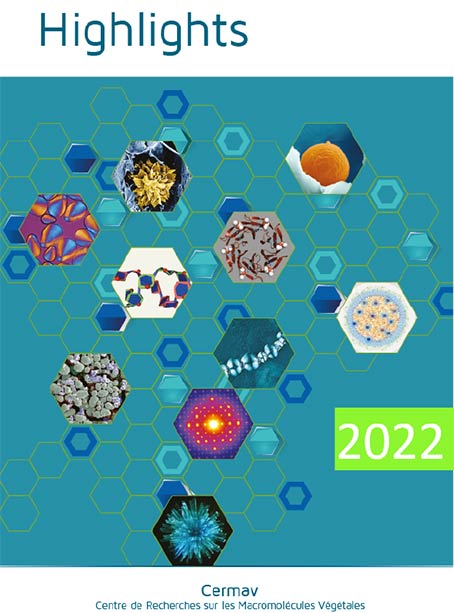Message from the direction

Dr Laurent Heux
The CERMAV, a CNRS research unit (UPR 5301) celebrates its 55th anniversary in 2021. During more than half a century, five directors have succeeded each other and have been able to develop the axes of this research unit. The themes historically focused on cellulose and lignin, then on plant polysaccharides of economic importance (cellulose and starch) have diversified and now cover different areas of glycosciences, whether towards the synthesis or biosynthesis of biologically active oligosaccharides, the uses of biomass, nanocomposite materials or glycopolymers
CERMAV is a leader in glycosciences in Europe and the activities of the five research teams, in different aspects of glycosciences, thus respond to major societal challenges in the fields of human health, emerging energies and materials for new technologies. In addition, the unit makes an important contribution to training through research to prepare students and young researchers for the professional, industrial and academic world.
The CERMAV is a member of the Grenoble Institute of Molecular Chemistry (ICMG, UAR 2607) alongside the Department of Molecular Chemistry (DCM, UMR 5250) and the Department of Molecular Pharmacochemistry (DPM, UMR 5063), with which it shares many facilities (NMR, Electron Microscopies, Mass Spectrometry…). It has a strong partnership with the University of Grenoble Alpes through various programs of the Idex, including the transdisciplinary program Glyco@alps. It is also strongly involved in the Carnot PolyNat projects for aspects of bio-based materials and the Labex Arcane for bio-inspired chemistry. It maintains close relations with the major Grenoble instruments (ESRF, ILL…) and the major European Glycosciences institutes (KTH, MPI Potsdam, biomaGUNE…) and many international universities (U. Cambridge, U. Geneva, U. Tokyo…), and is at the origin of an international laboratory with Taiwan.
Director : Dr Laurent Heux
Management Assistant and HR Manager: Isabelle Caldara
Head of Administration and Management : Dr Carole Speziani Millet
Contact : direction@cermav.cnrs.fr
Missions
Cermav is a research laboratory of CNRS, more particularly within the CNRS Institute of Chemistry. Cermav is the place of constant interaction with different actors: higher education, other organizations, business sector, and foreign partners … it participates in missions defined by the CNRS :- development and production of knowledge in all disciplines
- exploiting the results of research
- training and research
- dissemination of scientific and technical information
Collaborations
Located on the campus of Grenoble, the expertise of CERMAV is amplified by an exceptional scientific environment: on the one hand, l’Université Grenoble Alpes (UGA) and the Institut Polytechnique de Grenoble (INPG) in the East-Campus and, on the other hand, the Commissariat à l’Energie Atomique (CEA) and the large European facilities – the Institut Laue Langevin (ILL) and the European Synchrotron Radiation Facility (ESRF)– in the West Campus.
The Cermav is involved the Grenoble scientific community by sharing human and financial contributions in the areas of analytical techniques such as nuclear magnetic resonance, mass spectroscopy, X-ray diffraction, electron microscopy, information technology, etc. Access more significant to large instrumentation (ILL, ESRF) is also part of the essential tools that we put into play to develop our scientific programs.
At the international level, the Cermav maintains relationships with about forty foreign laboratories and institutes and there are as many collaborations with developing countries as with industrialized countries. For many years his skills and expertise enable the formation of foreign researchers and collaborations, that have led to many joint publications and the organization of scientific events too.
Organization
History
In 1957, Professor Marcel Chêne, ‘directeur des études’ at the École française de papeterie (EFP), proposed the creation in Grenoble of an Institute of cellulose and lignin, taking up the idea, launched in 1922 by the director of the electrotechnics institute and EFP, Professor Louis Barbillon, to establish a Cellulose Institute to complement the activities of the EFP and launch applied research in collaboration with the paper activities. In June 1960, a report about the acquisition of a site on the campus intended for the implantation of the institute, was sent to Professor Georges Champetier (Director of the School of Physics and Industrial Chemistry, member of the Institute, and Director General of the CNRS), who was at that time one of the only French academics to have carried out work on cellulose. The construction of the initial building was completed in 1966. In the same year, the CNRS changed the name of the institute as Centre de recherches sur les macromolécules végétales, whose work should focus on “the study of cellulose, lignin and other plant constituents” and so attributes its acronym to the Cermav.






